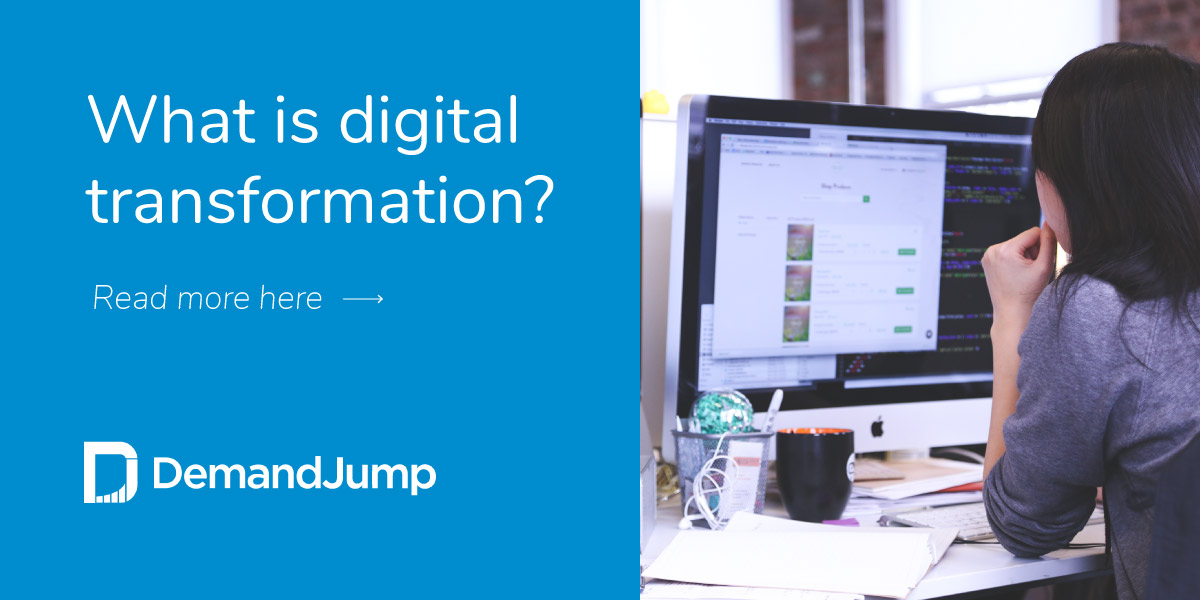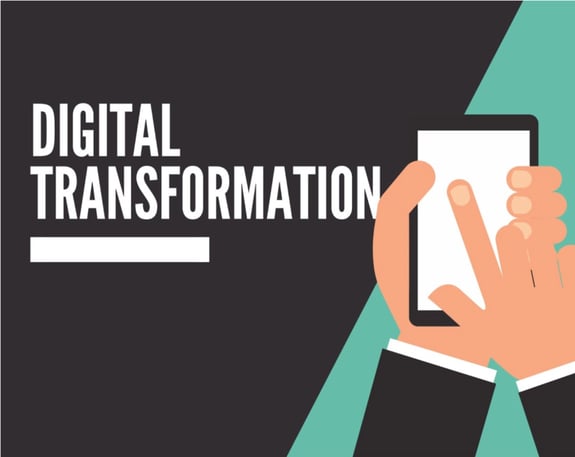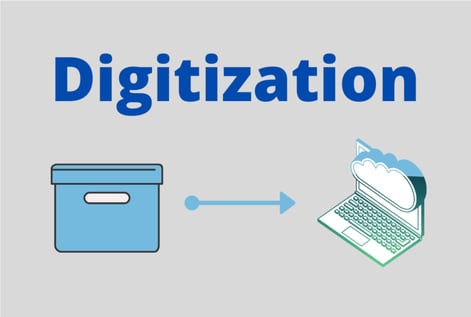What is digital transformation?
April 17, 2020 •DJ Team

Digital transformation refers to the process of incorporating technology into all aspects of business. It allows businesses to improve business operations and marketing strategies that are better suited for modern consumer demands. As the amount of digital data and software capabilities increase, updating marketing plans with evolving technologies must be a continuous part of business strategy.
The amount of data in the world grows exponentially every day. IBM previously quantified this rate at 2.5 quintillion bytes every day and stated 90% of all worldwide data came into existence within the last two years. Forward-thinking businesses use this data not only to provide greater consumer insights, but also to fundamentally rethink how to reach new and existing customers in the right way at the right time. This is digital transformation.
Why Use Digital Transformation?
So what exactly is digital transformation? Often abbreviated as DX or DT, this process enables marketers to create new digital marketing strategies or update existing ones by leveraging data. It eliminates barriers between siloed departments. It provides new customer experiences through the adoption of digital technologies, data-driven analytics, AI, and emerging software capabilities. As such, moving from legacy business operations by applying evolving technologies remains an ongoing journey.
Redesigning customer experiences is crucial in today’s digital world and requires rich customer insight research techniques. Over the past decades, digital technologies have disrupted everything from ordering lunch to communicating with coworkers — from memos and business letters to email to chat and video conferencing software.
Digital transformation does not merely ramp up existing business practices; it provides an opportunity to reimagine business processes to increase conversion rates and generate new business. Digital transformation helps businesses of all sizes create efficiencies, while also creating a better experience for customers with more personalization. As more companies take advantage of these data-driven capabilities, it’s become an essential skill set for survival in a competitive marketplace.

Digital Transformation Roadmap
Consumers today expect greater customization, tailored directly to their needs and preferences, all in the right moment. In fact, 63% of consumers expect personalization as a standard of service. Digital transformation meets this requirement as the next logical step after digitization and digitalization. Although both processes seem prevalent today, they constituted major changes in how businesses operated when first introduced.
Digitization

Digitization is the process of moving analog information, such as handwritten notes, forms and other printed documents, to a digital medium. This enables easier access and sharing of information across an enterprise.
Many businesses launched digitization efforts decades ago following the personal computer explosion, and it’s adoption has accelerated in recent years. In the early days, it involved excessive manual data entry of unique responses. Companies can now automate the digitization process using smart AI software to catalog and organize data.
Digitalization
Digitalization means moving to a completely digital format to speed up traditional business processes. Rather than requiring a customer or employee to fill out a paper form and then manually inputting the data, digitalization delivers a digital form. The entered data automatically uploads to a spreadsheet or linked database for analysis, whether saved on a local computer, enterprise networks or a marketing cloud.
With immediate access to digital data, companies can respond faster to customer expectations and trends found in market research. However, the business process does not fundamentally change from its previous concept.
Digital Transformation
Those two fundamentals — gaining digital data and analyzing it automatically — paved the way for digital transformation. Now, companies can use those data-driven insights to respond in real time to consumer demands.
Instead of using a form at all, maybe visitors use an RFID chip or scan a unique QR code, for example, to input data when entering a business or certain areas of a facility. Perhaps they use VR to make a virtual visit, saving time and resources through innovative new technology options.
Digital Transformation Focuses on the Customer
Through a granular approach to data, the marketer responds to individual customer needs, rather than attempting to guide the entire audience to a predefined solution. This allows companies to create better overall content marketing plans, social media marketing strategies and email campaigns, but it also allows for personalized outreach through flexible marketing platforms that offer automation and intuitive analytics dashboards.
Digital transformation is an ongoing process, so methods require continuous reevaluation to reach the right customers and effectively change business processes. Over time, however, it should seamlessly become part of the company’s development across all departments, from marketing and sales to customer service. When implemented correctly, it can help companies thrive in an ever-changing marketplace.
By using digital transformation, enterprise businesses effectively simplify marketing processes by analyzing cross-channel data, consumer behavior, and market intelligence insights to beat the competition and provide better user experiences. Learn how DemandJump helps businesses future-proof their strategies through digital transformation.
Featured Articles
Categories
- Attribution Tracking (13)
- Channel Optimization (11)
- Consumer Insights (68)
- Content Marketing (251)
- Data Science (8)
- Digital Marketing (6)
- Digital Transformation (26)
- Enterprise (10)
- Lead Generation (14)
- Market Intelligence (8)
- Marketing Analytics (39)
- Marketing Attribution (57)
- Marketing Management (153)
- Marketing Operations (86)
- Organic Search (222)
- Paid Search (52)
- Pillar-Based Marketing (63)
- Programmatic Advertising (9)
- SaaS Content (14)
- SaaS Marketing (29)
- Search Marketing (111)
- SEO Keyword Research (28)
- SEO Pillar (18)
- SEO Strategy (46)
- SMB (5)
- Website Content (12)


